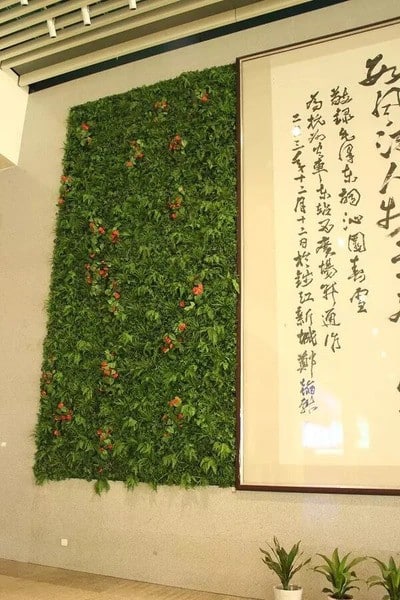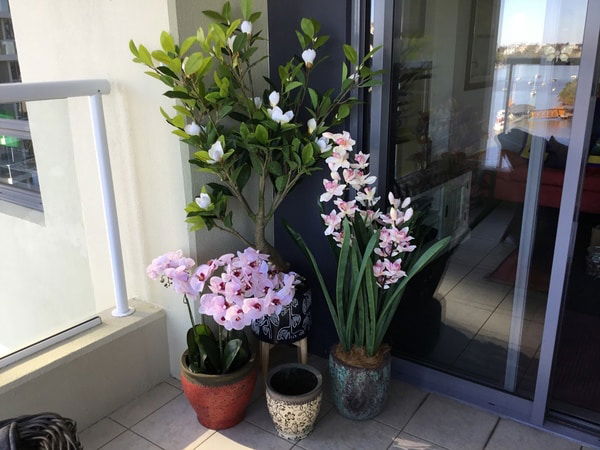Ancient China was more than the emperors and armies that graced the halls of royal palaces.
It turns out that it was also about artificial plants. A lot of artificial plants.
Artificial flowers have a rich history that stretches across centuries and cultures. From ancient civilisations to modern homes, artificial flower arrangements have evolved with the human race, our needs and wants.
They’re multipurpose in every way, and there’s so much we’d love to talk about. Here, we’ll explore the history of artificial flowers, when they were invented, how they have developed over time, and why they are still a popular choice today.
This is as close as you can get to a history lesson without actually being in school, but we promise we won’t make you fall asleep.
Sounds interesting?
Keep reading.
When Were Fake Flowers Invented?
We don’t know exactly when. It’s hard to pinpoint the exact moment fake flower arrangements were invented because they’re so old and have found a home in many ancient cultures.
Still, many historians trace their roots to ancient civilizations like the Romans and Egyptians. Apparently, Egyptians did much more than build pyramids.
They made flower arrangements from various materials available at the time, such as paper, linen, and other natural fibres, and then used them for decoration and religious ceremonies.
While the fake floral arrangements of today are much more sophisticated, the basic idea of creating flowers that last longer than real ones has persisted for millennia. This proves that the people of the time weren’t as different from us as we may think. Isn’t that unbelievable?
History of Artificial Flowers Timeline

Yet, over time this evolved into the detailed and realistic-looking options we see today.
And here’s what they had to go through to get to where we are today:
Ancient China
In Ancient China, legends speak of artificial flowers being crafted from silk as early as 1000 BCE.
Silk was a prized material, and the Chinese used it to create artificial flower arrangements that were symbols of wealth, beauty, and prestige. In the beginning, these arrangements were reserved for the wealthy and held their ground in affluent estates.
These imitation flower arrangements adorned temples and homes, offering both aesthetic and symbolic value.
Silk flowers were also used in rituals and ceremonies, which made them very important for later cultural development.
Legends of the time outline the prominence of artificial flowers, especially for the then-emperor Tang Xuanzong’s beloved concubine, Yang. It’s said that Yang had a scar on her left sideburn that she attempted to conceal with natural flowers picked by the palace girls.
But when winter came, the flowers would wither and Yang’s scar would be visible again. This prompted a palace girl to craft an artificial flower from ribs and sill for Yang to wear during the winter. This practice came to be known as the “headdress flower” craft.
Ancient Rome and Ancient Egypt
While both Ancient Rome and Egypt had their versions of fake roses and other artificial plants, their purposes were completely different.
In Rome, imitation flowers were often used for religious festivals and public ceremonies, symbolising honour and glory. The interesting part here is – the flowers weren’t silk or any other common material – they were wax. The Romans also used these wax flowers to crown victors in their games. To this day, their wax replica flowers have remained unmatched.
The Egyptians, on the other hand, used artificial flowers in burials, believing they could guide the dead to the afterlife. They crafted these flowers from more rudimentary materials like linen and reeds, which stood in contrast to the luxurious silk flowers of the East. Yet, they still used the flowers to adorn their homes.
The same, only different, right?
French Overtaking
European ingenuity came a bit later in the history of artificial flowers – during the 1300s, to be precise. This is when silk flowers first arrived in France and created a frenzy.
The French quickly rose to the top of the artificial flower industry in the 12th century.
By the 18th century, French artisans were unrivalled in their ability to create silk flower arrangements that were incredibly lifelike, thanks to the impeccable quality of their silk.
The most famous tale concerning the popularity of faux flowers comes from Marie Antoinette, who’s said to have worn fake floral arrangements in her hair as fashion accessories, helping to cement the already famous trend. Over time, her love for silk roses ensured the item would become her “royal emblem” and a must-have accessory for other noble women.
French silk flowers became a luxury item sought after by the wealthy across Europe.
The best and never surpassed quality from the hands of the French craftsmen – till the present.
English and American Expansion
The craft of making artificial flower arrangements expanded to England in the 18th century when French artisans shared their knowledge with the rest of the world.
To establish their place among the greats, England became a hub of artificial flower-making, and English companies took the industry to America to develop it further. As the New World was developing at a rapid pace and commercialising more than other countries, it was what the artificial flower industry was missing.
By the 19th century, the artificial flower trade had grown into a global industry, with silk flowers and other imitation flower arrangements adorning homes across the world.
The Victorian Era
During the Victorian era, fake roses and other plastic flower arrangements became even more widespread. In the mid-1800s, people harboured a deep appreciation for rich displays of wealth. They valued intricate detailing, ornate patterns, and heavily-textured materials.
They particularly loved filling their homes with floral arrangements, and those who could afford them desired the precious silk.
These arrangements were not just decorative but also a symbol of status. Floral designs became increasingly detailed, and the craft of making artificial flowers reached new heights of popularity. Over time, floral arrangements (real or silk) became a symbol of wealth.
The New Material
By the 20th century, advancements in plastic technology led to the development of plastic flower arrangements. This happened as a result of seasonal shortages of flowers coupled with the love for everlasting plants of all seasons.
Plastic flowers were much cheaper and more durable than silk, which made them accessible to a broader range of people. The new type of material, celluloid, made sure the plants were affordable and easy to produce.
Unfortunately, however, they were also highly flammable and caused a few deadly fires, which led to merchants ceasing their import and florists adopting real plastic.
Today, plastic flowers are a major part of the artificial plant industry, and the best bang for your buck.
Today
In the modern era, the artificial plant industry is booming.
New materials and production techniques have allowed the producers to create artificial flowers that are very difficult to tell apart from real ones and that look great in residential and commercial properties alike.
Whether used in homes, offices, or events, these low-maintenance alternatives have become a favourite for busy people who want the beauty of plants without the upkeep.
What’s the History of Silk Flowers?

Silk flowers quickly became a symbol of luxury and were used to decorate temples, homes, and royal palaces.
French artisans later perfected the craft, making silk flowers so realistic that they became a status symbol in European aristocracy.
As they spread to England and America, silk flowers were embraced as both a decorative item and an accessible alternative to fresh flowers.
And while new materials have since emerged, silk remains one of the most valued materials for artificial flower arrangements and is still present today.
Conclusion
The history of artificial flowers is a journey through time and culture, showcasing how people have continually sought to bring the beauty of nature into their homes in a lasting way.
From silk to plastic, fake floral arrangements have come a long way from their humble, yet celebrated beginnings.
Nowadays, realistic alternatives to fresh flora continue to decorate spaces worldwide, par for the course.















